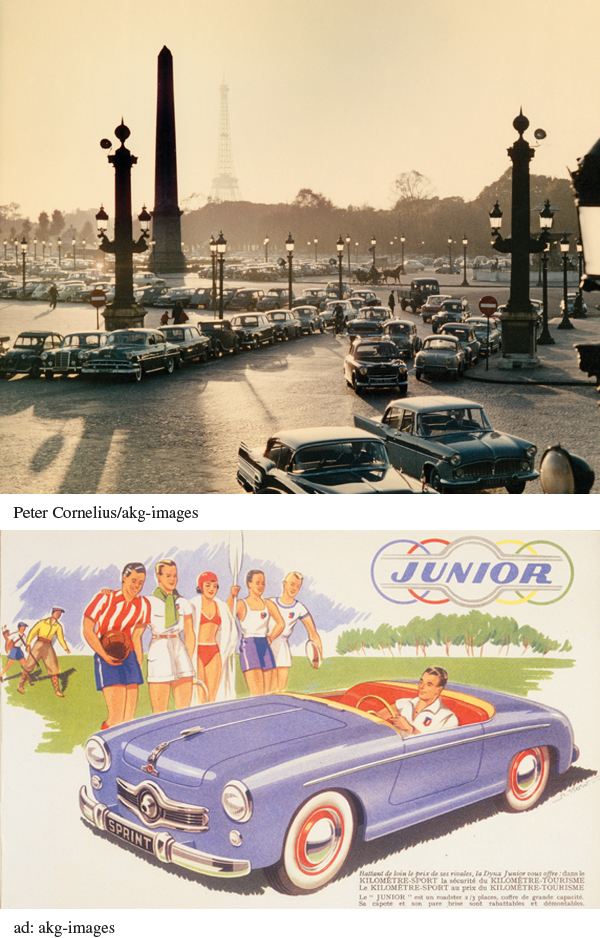A History of Western Society: Printed Page 955
A History of Western Society, Value Edition: Printed Page 917
A History of Western Society, Concise Edition: Printed Page 958
The Consumer Revolution
In the late 1950s western Europe’s rapidly expanding economy led to a rising standard of living and remarkable growth in the number and availability of standardized consumer goods. Modern consumer society had precedents in the decades before the Second World War (see Chapter 26), but the years of the “economic miracle” saw the arrival of a veritable consumer revolution: as the percentage of income spent on necessities such as housing and food declined dramatically, near full employment and high wages meant that more Europeans could buy more things than ever before. Shaken by war and eager to rebuild their homes and families, western Europeans embraced the new products of consumer society. Like North Americans, they filled their houses and apartments with modern appliances such as washing machines, and they eagerly purchased the latest entertainment devices of the day: radios, record players, and televisions.
The purchase of consumer goods was greatly facilitated by the increased use of installment purchasing, which allowed people to buy on credit. With the expansion of social security safeguards reducing the need to accumulate savings for hard times and old age, ordinary people were increasingly willing to take on debt, and new banks and credit unions offered loans for consumer purchases on easy terms. The consumer market became an increasingly important engine for general economic growth. For example, the European automobile industry expanded phenomenally after lagging far behind that of the United States since the 1920s. In 1948 there were only 5 million cars in western Europe; by 1965 there were 44 million. Car ownership was democratized and became possible for better-

Visions of consumer abundance became a powerful weapon in an era of Cold War competition. Politicians in both East and West claimed that their respective systems could best provide citizens with ample consumer goods. (See “Evaluating the Evidence 28.2: The Nixon-Khrushchev ‘Kitchen Debate.’”) In the competition over consumption, Western capitalism clearly surpassed Eastern planned economies in the production and distribution of inexpensive products. Western leaders boasted about the abundance of goods on store shelves and promised new forms of social equality in which all citizens would have equal access to consumer items — rather than relying on class leveling mandated by the state, as in the despised East Bloc. The race to provide ordinary people with higher living standards would be a central aspect of the Cold War, as the Communist East Bloc struggled to catch up to Western standards of prosperity.